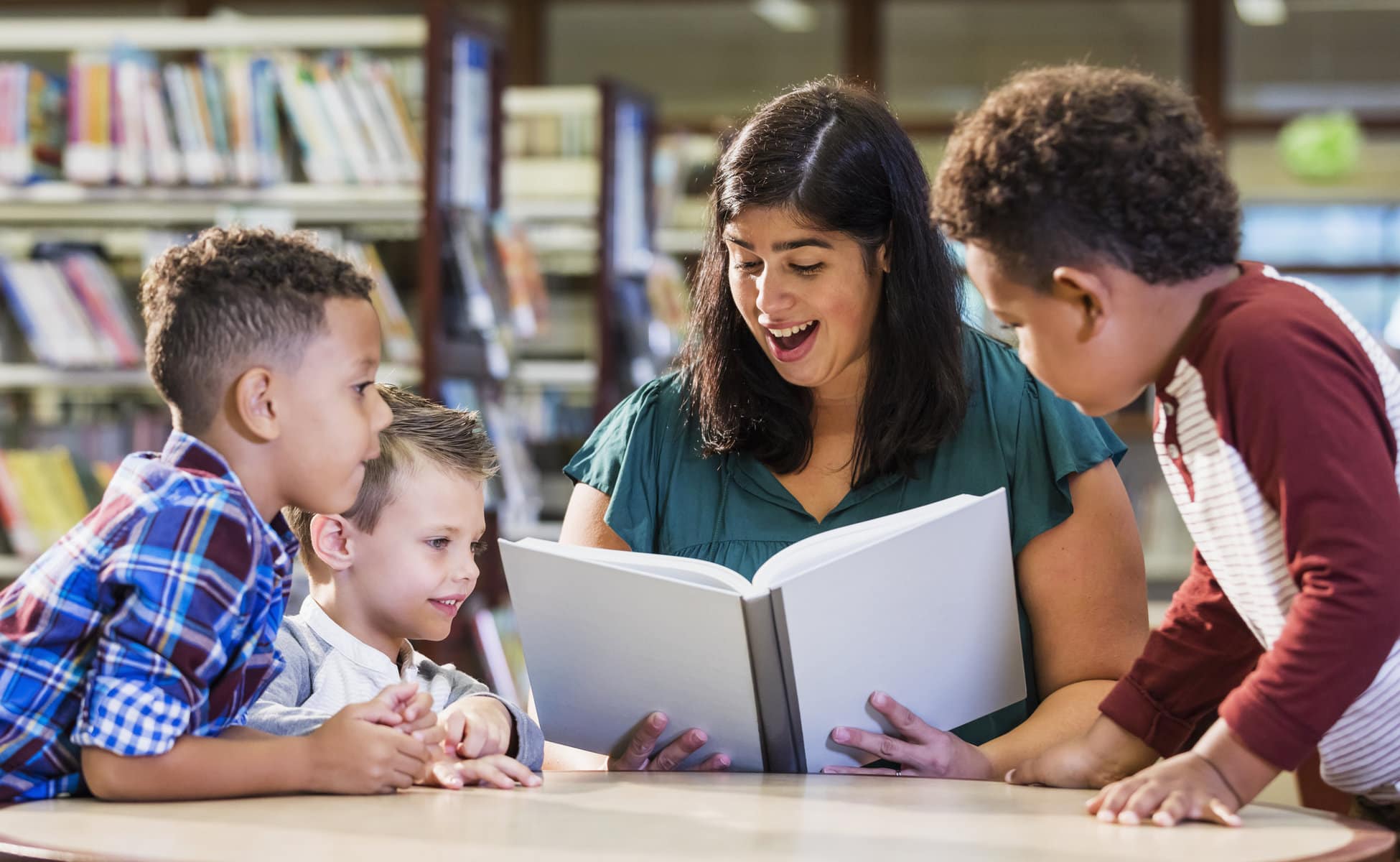What’s the difference between additive and subtractive multilingualism? As you teach multilingual students, the way you answer this question could make a world of difference for your students. Teaching your multilingual students with an additive mindset is one of the surest ways to help them gain strong biliteracy skills, or the ability to read and write in all of the languages they speak.
Read on to discover more about additive and subtractive multilingualism teaching mindsets. Then, learn how you can help your multilingual students in your school gain biliteracy.
What is an Additive vs. Subtractive Multilingualism Teaching Mindset?
 If you’re trying to figure out the best way to support multilingual children in the classroom, teaching with an additive multilingualism mindset is crucial. But what is additive multilingualism, and what does it mean for your students?
If you’re trying to figure out the best way to support multilingual children in the classroom, teaching with an additive multilingualism mindset is crucial. But what is additive multilingualism, and what does it mean for your students?
First, here’s a quick definition of multilingualism in general. Multilingual refers to a person who can speak two or more languages fluently. Although some students may not yet be fully multilingual, the goal for these students is to attain strong reading, writing, and communication skills in every language they speak.
Additive multilingualism is when a student’s first language continues to be developed while they’re learning other languages. Subtractive multilingualism, however, is when a student learns additional languages at the expense of their first language, often because educators discourage them from maintaining it on an implicit or overt level.
In the latter case, the student may lose the ability to speak their first language over time. Children who are taught by educators that use a subtractive multilingualism mindset may feel like their first language is unwelcome in class and like it is not valued in educational settings.
If you do not speak a language that your students speak, you may feel unprepared to help them develop skills in that language. In this case, your role isn’t to directly teach in that language, but to teach them core reading skills—like phonological awareness—that apply to language development in general and to teach with a positive mindset towards every language they speak. You could, for example, stock your school library with a few books in the languages your students speak or connect them with other students who speak those languages, too.
Recognizing the Benefits of Multilingual Learning and Prioritizing Biliteracy
 The educational field held a bias for decades that learning two languages at once would hinder a child’s literacy development.[1] Research has proven that this couldn’t be further from the truth. In fact, children who are multilingual often have stronger early reading skills, including phonological awareness and letter decoding, for all languages they speak because these skills crossover.[2]
The educational field held a bias for decades that learning two languages at once would hinder a child’s literacy development.[1] Research has proven that this couldn’t be further from the truth. In fact, children who are multilingual often have stronger early reading skills, including phonological awareness and letter decoding, for all languages they speak because these skills crossover.[2]
Often educators of multilingual learners who are not multilingual themselves exhibit a bias while teaching. This means that instead of prioritizing a proficiency in every language a student speaks, a teacher’s only goal is for the student to learn reading and writing skills in English.[3]
Your goal for multilingual learners should always be biliteracy. Biliteracy is here defined as the ability to read, write, and communicate in every language spoken by a student. That way, they are better accommodated to gain reading abilities in all languages they speak.
Tips for Teaching with an Additive Multilingualism Mindset
Sometimes when multilingual students whose first language is not English enter a school, their first language skills suffer as the cost of learning English because their teachers use a subtractive mindset. You can help your students maintain their language skills if you educate with an additive mindset.
Use these five tips and accommodations for teaching multilingual students with an additive mindset:
- Teach your multilingual students with a goal of developing biliteracy, or the ability to read in every language they speak, and not just English literacy skills.
- Engage families in creating goals for their child’s education over the school year and work with them to develop what they envision, in terms of their child’s multilingual learning.[4]
- If your multilingual student is still learning English, increase your response time by 2–3 seconds when asking them questions. It may take more time for these students to translate your question into their first language, then translate their answer into English.
- Organize a professional development training session for your teachers or colleagues on what additive multilingualism is and how to develop an additive mindset over a subtractive multilingualism mindset.
- Stock books in the languages your multilingual students speak in school and classroom libraries to help them continue practicing their first language. Check out this list of multilingual children’s books from Scholastic to get started.
Sources:
1. Bialystok, E., and Barac, R. Emerging bilingualism: Dissociating advantages for metalinguistic awareness and executive control. Cognition, January 2012, 122(1), pp. 67-73.
2. Bialystok, E., Luk, G., and Kwan, E. Bilingualism, Biliteracy, and Learning to Read: Interactions Among Languages and Writing Systems. Scientific Studies of Reading, 2005, 9(1), pp. 43-61.
3. May, S. The disciplinary constraints of SLA and TESOL: Additive bilingualism and second language acquisition, teaching and learning. Linguistics and Education, September 2011, 22(3), pp. 233-247.
4. King, K., and Fogle, L. Bilingual Parenting as Good Parenting: Parents’ Perspectives on Family Language Policy for Additive Bilingualism. International Journal of Bilingual Education and Bilingualism, 2006, 9(6), 695-712.

